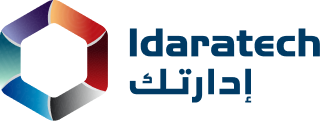In today’s fast-paced digital environment, efficiently managing papers is critical for businesses of all sizes. Traditional paper-based methods are becoming obsolete, and document management systems (DMS) and document management software (DMS software) are taking their place. From increased organization and cooperation to increased security and compliance, these cutting-edge tools offer a wide range of benefits. We will go into the realm of the document management system for HR in this blog, going through its benefits, features, and its working to take into account when choosing the best option for your company.
Overview of Document Management System

A system that facilitates the generation, storage, management, indexing, protection of each document, and maintenance of data accuracy in bulk is known as a document management solution. Employee information and office papers are mostly stored in the cloud and on mobile devices through document management system software.
This cloud framework makes it simple and safe to transfer important data and gives you access to digital documents from anywhere in the world at any time of day.
The correct document management system for HR can be used by organizations to run enterprise content management systems (ECM). It offers a wide range of features and functionalities to optimize document-related procedures, guaranteeing quick access, version control, and productive teamwork. Organizations can do away with paper-based system drawbacks, including duplicate paperwork, lost or missing papers, and laborious manual procedures by implementing a DMS.

Benefits of Using a Document Management System for HR

1. Human Resources Operational Excellence
HR departments need to discover methods to streamline the management of paperwork because they are overburdened with work. Productivity will rise with the implementation of an integrated employee document management system, freeing up HR staff members’ time for work centered around business strategy and employee experience. HR may lessen some of the administrative strain connected with employee files by automating document-related procedures, providing employee self-service, and combining them in one accessible spot.
2. Simplifying Security & Compliance
Employee document management becomes a crucial component of an HR ecosystem as a result of new and complicated requirements on privacy and document retention, as well as elevated risks of security events. Role-based permissions, complete audit trails, instantly locatable, current files, and automated disposal would facilitate compliance and lessen the possibility of high legal fees and penalties.
3. Improve the Employee Experience
Workers anticipate quick and simple access to their information, individualized communications, and digital processes. Employees can create particular papers or view their files easily and transparently without having to wait for an answer from HR when they use an employee document management system. An employee’s sense of pride and confidence in their company can be greatly increased by providing them with a digitally signed contract that is error-free and offers the option for an electronic signature.
- Fast and simple creation of letters and contracts
- Document uploads into appropriate directories are completed quickly.
- Important papers are incorporated into pertinent HR business operations
- Reduced the number of time-consuming manual HR processes
- HR document centralization at a single, accessible location
- Total control over the lifecycle of a document in terms of content management
- Reduced storage and labor expenses associated with tangible records
- Enhanced accountability and transparency
- Possibilities for improving employee self-service features
- Decreased instances of human error
- Legal and reputational protection
| Key Features | Disclaimer |
| Document Capture and Scanning | The process of converting hard copy documents into digital formats by means of OCR (Optical Character Recognition), scanning, and automatic extraction of metadata. |
| Document Storage and Organization | Organizing documents into tags, subfolders, or folders for quick and simple search and retrieval. |
| Version Control and Collaboration | Tracking document updates, managing various versions, and enabling real-time collaboration among team members. |
| Workflow Automation | This technique lowers human error rates and increases productivity by automating document-related activities like task assignments, notifications, and approval workflows. |
| Security and Access Controls | Encryption, user permissions, and granular access controls should be implemented to safeguard confidential data and guarantee compliance. |
| Integration and Compatibility | To improve productivity and optimize processes, there should be a smooth interaction with other software products like email clients, CRM programs, or project management platforms. |
How Does the Document Management System (DMS) Work?

1. Document Capture
Documents from any source can be gathered by an organization using document management software. We refer to it as indexing. Using this approach, an organization can classify and handle the document by adding phrases such as order number or customer number to the document’s metadata.
-
Paper Documents
Organizations require high-speed scanners to capture paper documents for paper documentation. Afterwards, the document management systems receive the scanned copies. Additionally, the indexing is finished manually or through the use of barcoding, zone optical character recognition (OCR), ERP software screen interface, etc.
-
Email Attachments
Using email to collect and manage documents is a crucial component of modern corporate procedures. Invoices and other paperwork are increasingly being received, and they are being properly barcoded and stored in document management software.
-
Reports Generated by the System
Documents created by systems or reports that have already been generated can be conveniently kept in the document management system for HR. Additionally, it’s a safe procedure. The majority of businesses that operate out of warehouses have access to these report management tools, which securely track anything from sales patterns to inventory levels in a warehouse. It expedites the process by which your warehouse managers and sales teams may access the documents.
-
Capture for Any Application
A document management system guarantees that you may import documents immediately, assists you in organizing the documents you need, and facilitates the tracking and routing of electronic documents for later use.
Enterprise resource planning (ERP) and customer relationship management (CRM) programs that generate documents are a need in any company. One of the newest concepts is to scan those documents and save them in a document management system for HR.
2. Document Storage
Document storage must be central to document management systems. It is essential for organizing and keeping records that come from everywhere. There are two basic reasons why central document storage is necessary.
-
Centralized File Storage
As workers require instant access to work on documents from anywhere at any time, organizations are beginning to implement remote work arrangements. To keep track of company documents and reports so that staff members can access them from a distance, central document storage is a one-time solution.
Both static and dynamic documents, such as employee personal information, web pages, and emails, can be kept in one location. Examples of static documents are bills, invoices, and purchase orders. Document storage in the cloud has made the process of storing documents much more efficient.
-
Providing Security
Document storage can increase Security in addition to central document storage facilities by offering improved version control, disaster recovery, audit trails, access control, and encryption. To allow the company to manage access and monitor staff movements, it makes sure that users give permission every time. The ability to create, edit, read, route, and remove documents can be specified for individual users.
3. Centralized Distribution of Documents
An additional essential part of the document management system is document distribution. Organizations are able to distribute a large number of documents to vendors, staff, and consumers with this component.
There is two-way verification during the document distribution procedure for each document because of advanced security features. The business can disseminate a large number of papers via email or FTP due to this management system.
4. Process & Workflow Automation
- Document retrieval, storage, and distribution are just the start. A suitable document management system for HR makes sure that digital business content is processed and automates manual processes and workflows.
- Let’s talk about automating the manual process. It is fairly easy. The organization establishes the system. Rest processes will run on autopilot. Assume you receive an invoice through your document management system.
- The account payable system can be quickly routed to receive the invoice. The system sends a notification if it finds a problem; otherwise, it immediately pays the invoice. A formal approval procedure is no longer required. Automating the entire workflow process is made possible by using the right electronic document management system for HR software in conjunction with ERP support.
- Take into account a purchase that was made using your ERP and sped up the document management system’s workflow procedures. In turn, it results in the automatic completion of subsequent approval processes.
The Bottom Line
A business must adjust to the changing document management landscape. An efficient way to get around the problems with conventional paper-based processes is to implement a document management system and software. A DMS enables businesses to maximize productivity, boost collaboration, and assure regulatory conformance by centralizing document storage, optimizing workflows, and providing enhanced security and compliance capabilities. It’s critical to take into account the unique requirements and objectives of your company when choosing a document management system in order to locate the best option that will increase efficiency and promote success.
Because of this, every organization has a document management system for HR as part of its management system. It saves time and money.
Idaratech Platform is one of the best document management HR systems for every type of business.
FAQ’s
Question 1: Why do we require a document management system?
A document management system for HR is used to automatically organize, secure, digitize, and classify business documents, making them simple to access, edit, and distribute.
Question 2: What is the importance of a document management system for HR?
Typically, document management allows enterprises much greater control over the security and access of their documents. Only those who require access to them, such as those in accounting, human resources, or those in charge of secret concerns, should be given access to confidential papers.
Question 3: What is the significance of documentation?
The Importance of Documentation: Documentation is essential for establishing process control and quality. The ability to spot inefficiencies, cut waste, and maintain consistency is made easier by documenting every stage of a process.
Question 4: What is the scope of a document management system?
A method for handling, managing, and organizing papers is called document management. Through the use of scanners, modern technology allows DMS systems to manage things like native electronic files and paper documents.

